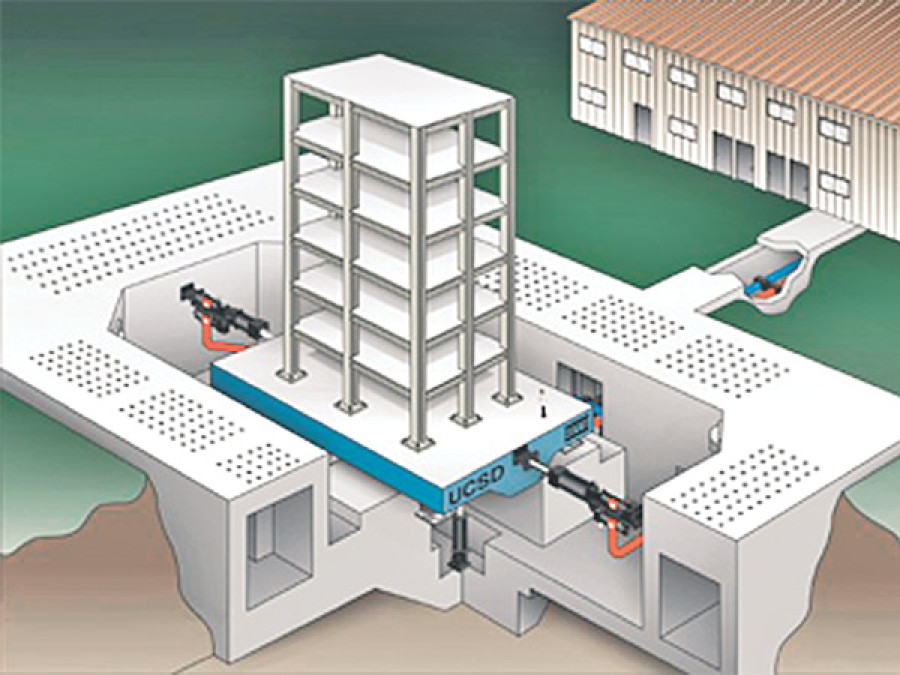Entertainment
Rebuilding our schools safely, beautifully, locally
We now have to shift away from temporary school structures, however necessary they may have been in the immediate aftermath of the earthquakes
Sophia Pande
Over 20,000 schools were destroyed by the earthquake, a dismaying statistic put out by the Department of Education. The government and its many partners and stakeholders worked together to define and create guidelines for Temporary Learning Centres (TLCs) in the immediate few weeks and months after the earthquake, precisely to try and create an environment where children could be safe and comfortable and return to their educations. However, now that the monsoon has hit, and even before it reached its zenith, it is fast becoming clear that the government-approved, mostly uncured bamboo structures, would not last over the months of the rainy season that buffets Nepal every year.
Those invested in education know clearly that they now have to shift away from these temporary structures, however necessary they may have been in the immediate aftermath. As medium and long-term rebuilding planning for schools commences, the government is scrambling to find the best, fastest, safest possible ways in which to rebuild these thousands of partly and totally damaged schools.
While schools must be rebuilt as soon as possible (under the government’s medium-term Semi-Permanent Classrooms bylines, the structures must stand for 3-5 years) some lessons learnt, from Haiti and elsewhere, must be incorporated into how the Department of Education sets its parameters for rebuilding—as we now know, what goes up, if it is even mildly durable, often stays up for years to come.
The market is already being flooded by imported pre-fabricated housing. While pre-fab housing is incredibly durable and is a quick, easily implemented option for post-disaster shelter, they cannot be allowed to become permanent structures in the long run. This may be suitable for long-term housing in some areas, environment allowing, since the most basictype of pre-fab housing does not come with built in insulation; however, school structures, if they are to become permanent, should be built with great attention to the communities in which these building will ultimately be incorporated into.
A top-down approach, in times like these, with donors coming in to help the government in the rebuilding of schools, would be to go ahead and choose the fastest, ‘easiest’ option. However, with a little bit of thought, and a great deal of effort, we could rebuild better and more suitable learning environments, than used to be the case earlier, for children that are actually adapted to the needs of the children.
The ideas I am about to elaborate on here are not just my own. These views are held by numerous people working in education, from teachers to NGO or INGO veterans who believe that while it is essential to work hand in hand with bodies such as the Parent Teacher Association (PTA), and the School Management Committee (SMC), as well as head-teachers, and government Resource Persons (RPs), we must also consult with the communities themselves before we rebuild schools.
In fact, ideally, a comprehensive needs assessment should be done from community to community, involving parents, village elders, and community- based organisations such as mothers’ groups and fathers’ groups to really understand the ideal design for a school. Then the government bodies may be consulted, creating a dialogue that results in a structure that everyone agrees to, additionally creating ownership and community buy-in, a factor that is essential in keeping children in school. The process is, no doubt, much more complicated than just going in and rebuilding schools as per government regulations; however, now is our chance to make our education system infinitely better, starting with the school structure and therefore the basis of learning itself. Attractive, environmentally suitable classrooms with gender sensitive
toilets, for example, (the dropout rates for girls after they start menstruating and have no privacy in schools is very high) make for happier students.
None of these changes will be easy, and all of them must happen with changes in government policy. Now is the time for the government to listen to the voices of the people invested in education—teachers, parents, students themselves—and support local homegrown school structures and organisations that will invest in developing them as open source plans. Finally, the government should promote, if not subsidise locally available materials, so that these schools can be rebuilt in ways that will support the local economy and provide opportunity for local labour at the same time.
Since we have to get our children back into school, why can’t we get them into schools that actually encourage their imaginations, and fit their needs, rather than settling for 20,000 standardised units that have no heart and soul.




 5.15°C Kathmandu
5.15°C Kathmandu










